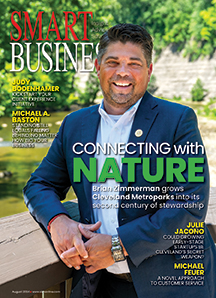
Capital projects require a great deal of attention in order to be successfully completed. There are many pitfalls and each can be costly or potentially derail the project. That’s where owner’s representatives come in.
“From the perspective of CEOs and CFOs, hiring an owner’s representative to manage a capital project serves to eliminate uncertainties by engaging experienced leadership. The result of that is to increase the predictability of the outcome of the project,” says Ken Mason, CPC, vice president of Plante Moran CRESA.
Owner’s representatives manage projects from concept through completion. They understand what questions to ask, what information needs to be gathered, and how to keep projects on time and on budget.
“We have the ability to develop very accurate cost models so boards and CEOs can make informed decisions before they set a project in motion, otherwise they might plan for months only to find out a project is not feasible,” he says.
Smart Business spoke with Mason about the role of an owner’s representative and how they help ensure projects are completed as originally intended.
What aspects of a capital project does an owner’s representative handle?
It starts with the strategic planning and project feasibility. An experienced owner’s representative or project manager can help develop the right business model and collect outside data, such as a develop demand analysis, and perform demographic and market research, to help create the financial architecture of the project and understand its purpose. The owner’s representative also develops schedules and budgets that are both reasonable and attainable.
In the schedule, there are components beyond physical construction activities, such as regulatory requirements, entitlement time frames, move planning and other milestones.
Owner’s representatives also handle the team selection process, which is criteria based, to make sure you’ve got the right designers and construction firms. Part of that process is working for tough, but fair, contract language that appropriately transfers the risk to those various entities, thus mitigating the owner’s risk.
A strong owner’s representative is vigilant in the budget and schedule management and oversight. Also, through the use of technology, he or she should offer real-time reporting and access to information at the click of a button to help owners understand the key indicators of the project.
Additionally, through the process there’s always a need to have the project owner’s internal resources engaged in the projects. Experienced owner’s representatives know when to engage these people and when not to, in order to keep staff on their mission and not engage them unnecessarily throughout the process.
It’s important to bring a strong end to the project, including financial and closeout activities with diligent oversight. Move management is also an important activity that needs to be managed to not disrupt operations.
What background do owner’s representatives typically have?
Usually there is blended experience within a team. Someone may have more experience on the project design and planning side or on the physical construction and technical building side. That’s typically supplemented with some financial experience and understanding of how to look at a business plan and make sure that the goals are obtainable and the assumptions made are correct. You have to have a little experience in a lot of things and understand when you need outside resources to support you for the occasional deeper dives required throughout the project’s life cycle.
Typically one owner’s representative serves as a project’s lead, but he or she is supported by a multidisciplinary team of experts who are involved at the appropriate time.
Why should an owner’s representative be brought on to a capital project?
Organizations may not have the resources to handle all the tasks of a large construction project. There are numerous risks associated with any project, such as not meeting financial expectations, running late or over budget, or having mistakes made along the way that add costs. Permitting and regulatory requirements are also part of the day-to-day responsibilities of the project manager.
A lot of projects could fail because you had the right business plan and budget, but the wrong team. Some people who have never been through the process might not know how to gather and analyze the appropriate data to select one. You could have good intentions at the outset, but the wrong expertise. It’s not always a cost-based selection, it’s really criteria based, which involves costs, experience and the team that’s put in place.
One client, for example, had started a major capital project on its own. About a third of the way through it asked Plante Moran CRESA to look at where it was and perform an analysis. We found the project was behind schedule and significantly over budget. We developed a recommendation and recovery plan, and then implemented it. The project was completed in the originally defined time frame and for less than their original budget.
Why should an owner’s representative work through the completion of the project?
At the end of a project, without some oversight, there’s a tendency for things to linger — a few open issues don’t get addressed properly, paperwork and lien exposure is not adequately mitigated, financial closeout doesn’t happen on the appropriate timeline. The longer these stay open, the greater the financial risk and the more obstacles exist to meeting the original expectations.
Also, when you’re moving into a new facility it’s a major undertaking with a lot of pieces and parts that need to be planned for, and events need to occur in a timely and orderly fashion to not disrupt business operation.
Ken Mason, CPC, is vice president of Plante Moran CRESA. Reach him at (248) 603-5236 or [email protected].

